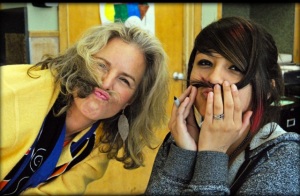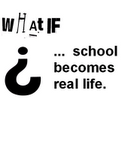Tags
alternative, American, charter, children, classrooms, dream, economy, education, free, freedom, funding, homeschool, inspiration, interview, learning, magnet, new paradigm, occupy, policy, reform, revolution, school, schools, social change, standardized, student, teaching
 Jaime R. Wood is founder of Dream School Commons, a nonprofit organization with the mission of starting innovative low-cost or no-cost schools that serve populations in need. She is also the author of Living Voices: Multicultural Poetry in the Middle School Classroom (NCTE 2006). She started her teaching career working with middle school students in an alternative charter school in Fort Collins, Colorado. She has since taught college English at Colorado State University, University of Missouri-St. Louis, and Eastern Washington University. Currently, Jaime teaches writing at Clackamas and Mt. Hood Community Colleges in Portland, Oregon. You can learn more about Dream School Commons here:www.dreamschoolcommons.org.
Jaime R. Wood is founder of Dream School Commons, a nonprofit organization with the mission of starting innovative low-cost or no-cost schools that serve populations in need. She is also the author of Living Voices: Multicultural Poetry in the Middle School Classroom (NCTE 2006). She started her teaching career working with middle school students in an alternative charter school in Fort Collins, Colorado. She has since taught college English at Colorado State University, University of Missouri-St. Louis, and Eastern Washington University. Currently, Jaime teaches writing at Clackamas and Mt. Hood Community Colleges in Portland, Oregon. You can learn more about Dream School Commons here:www.dreamschoolcommons.org.
DaretheSchool: What inspired you to create Dream School Commons?:
Jaime: Five years ago when I was living in St. Louis Missouri and I was watching the documentary about TED, Technology Entertainment Design. The TED conference is a forum where these big thinkers come up with lofty ideas to make the world better. People basically go up on stage and say: “Here’s my idea of how we can make a dent in the problems of the world.” I was inspired by what I saw and came up with an idea of my own. My idea was to collect essays from the most brilliant minds of education and put them together. The question that would frame these ideas would be “Hey expert, if you could build a dream school what would that look like?”
However, I realized the whole “expert” idea was problematic, as was the idea of it being in an anthology/book form. I felt this was archaic. I decided that I wanted this to be a democratic endeavor that anyone could contribute to. In my 10 years of teaching, I have learned the people who never get a voice are often the most innovative. The people we label as being ignorant often have the best answers. I decided to start by collecting stories and seeing what happens from there. Many times we are listening to the wrong people.
DaretheSchool: Why is there a need for a “Dream School?”
Jaime: It frustrates me to live in a city that has all of these amazing and innovative schools, yet the overwhelming majority of them are private and cost tens of thousands of dollars each year. If they are not private, then they are magnet and charter schools, which isn’t necessarily a bad thing, but you have to fight your way into the school which pushes away many families in need. An important part of the mission of Dream School Commons is these schools need to be “low-cost or no cost” and they should “serve populations in need.”
Daretheschool: What a great point! Thinking of your mission to have these schools serve populations in need, what are your ideas in terms of funding?
Jaime:That’s a good question and it’s something I am still researching . I must admit that with every possibility I research, there seem to be pros and cons. For example, there is a great school called the Eagle Rock School in Estes Park, Colorado, and it’s funded by the Honda corporation and they have an amazing facility. In an ideal world, I would like to see these sorts of schools publically funded; however, then there are certain rules you must abide by that many times hinder a creative curriculum. I’m finding lots of road blocks and I’m trying to figure out what the escape route is. Many of the issues that we’re seeing now in terms of funding is that we are operating with a “top-down” bureaucracy with the people with the most power making all of the decisions.
DaretheSchool: What is your dream school?
Jaime: I have some strong ideas about what I think will work. Schools should revolve around what students want to learn. I think this can start at any age range. I believe in students building their own curriculum and setting their own goals. I worked at a charter school that used an Expeditionary Learning Outward Bound philosophy. In this model, students learn in expeditions. We had themes and guiding questions. We did not use textbooks or grades. At least twice a year we would have student/teacher/parent conferences and the meeting was led by the student. We ended each meeting with goal setting: educational, social, and lifelong learning goals. I think this is a good way to promote learner autonomy. Project-based learning would be key; however projects for the sake of projects would not be enough. In my dream school I would want for students to be solving real-life problems. Right now we are closing schools off and turning them into environments that are not real or relevant to the lives of children. I want to connect the real world to the school. I would like to see the Dream School connected to schools around the world and at least one university. I think there are lots of community resources that schools should be connected to. The structure we have made around schools is completely arbitrary. I think we need to re-think the grade level idea.
My idea is very similar to what we are seeing with the Occupy movement. The movement should be leaderless, democratic and participatory. I believe students should be on the Board of Directors and administrators should be in the classroom.
DaretheSchool: Who has influenced your ideas in education?
Jaime: I’ve been reading a lot of Howard Gardner lately. His book: The Unschooled Mind is very thought provoking. My mother was my English teacher in high school and was a big influence for me as well. She put a living room in her class complete with a couch and an aquarium. Her students would rarely sit in rows. She made her classroom welcoming and inviting to her students. This goes with my belief that a school should be a community and the community should be invited into the school.
For more information, please visit: dreamschoolcommons.org
















